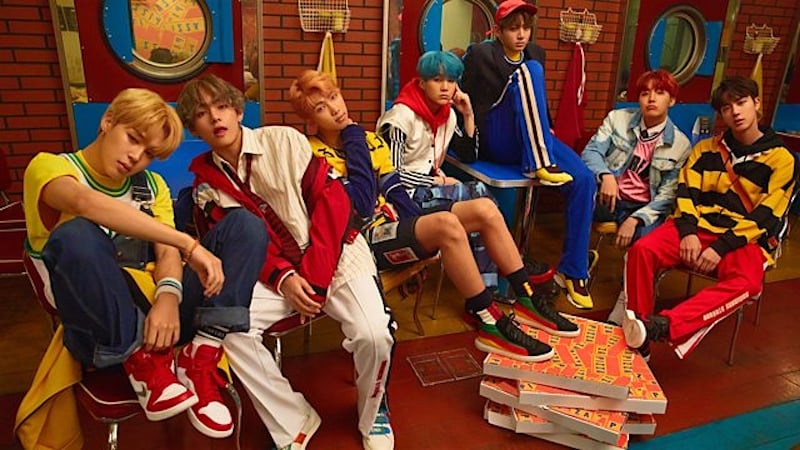Unless you’ve been living under a rock for the past decade or so, you’d notice that Korean pop culture has been all the rage, all around the globe. This ‘Korean wave’ phenomenon is commonly referred to as hallyu. What used to be limited to a niche market has now broken into even Western mainstream. And if you think this is all a matter of fluke — well, think again!
Back in the late ‘90s, Asia went through a huge financial crisis. This led to the decision of the South Korean government to use music to improve its image and build cultural influence. Eventually, they allotted millions of dollars into forming a Ministry of Culture that comes with a department wholly devoted to (*drumroll please*) K-pop.

The logo for the Ministry of Culture, Sports, and Tourism. | Image credit: Republic of Korea
“It turns out that the Korean government treats its K-pop industry the way that the American government treats its automobile and banking industry, meaning that these are industries that have to be protected,” said Euny Hong, the author of The Birth Of Korean Cool, in an interview.
K-pop in recent history

Image credit: Yongho Kim
The Korean government has made it a priority to protect the interests of K-pop stars. This includes, but isn’t limited to: innovating hologram technology, building massive concert halls, and even regulating noraebang (karaoke bars). In sum, the goal is to make K-pop ‘universally cool,’ similar to how American culture is — if not more.
Most K-pop songs carry a distinct sound with dancey beats and an integration of English lyrics. In 2009, solo artist BoA and girl group Wonder Girls became the first K-pop stars to chart on the US Billboard 200 and Hot 100.
Meanwhile, boy band 2PM released a catchy song, “Fly to Seoul (Boom Boom Boom)” that was part of a 2010 campaign to promote tourism in South Korea. In 2012, the music video for “Gangnam Style” by Psy became the first YouTube video to reach one billion views! Along with this came the worldwide craze over the satirical horse-like dance.

Image credit: RAS 99
So, in Gen-Z terms: these artists walked so current stars like BTS, Blackpink, and EXO could run. And indeed — in 2018, BTS broke the US Billboard charts with its two albums. They were also the second best-selling artist for 2018, according to the Global Artist Chart. As of 2019, the group has contributed around US$4.65 billion to South Korea’s GDP. On top of all these, BTS became the first Asian band to surpass five billion streams on Spotify!
Also read: The Perfect Home Workout Playlist: 18 K-Pop Songs That Will Get You Pumped!
Behind the global phenomenon
The global rise of K-pop is clearly no accident. On top of the special support from the government, ‘production’ of K-pop stars is also treated with utmost discipline. From recruitment to years-long training and carefully planned presentation, loads of strategic planning is obviously in play. This, of course, paid off with massively successful talents that contributed to putting K-pop on the global mainstream.
The Internet has also played a huge part in this cultural influence — specifically, social media, streaming platforms, and the totally engaged K-pop fan bases. From creating (and maintaining) devoted fan accounts and making sure their idols’ songs consistently top the charts, to buying out concert venues; the ‘totally engaged’ part is no exaggeration!

Image credit: BBC Official Website
Suffice to say, most K-pop crowd faves have become practically hard to ignore — or at least, impossible to not have heard about, even among non-fans. The BBC documentary K-pop: Korea’s Secret Weapon? gives a further in-depth look at this.
Here, the Director of Tourism at Gangnam District Office, Kim Gwang-soo, talked about how K-pop has benefitted both their local economy and their country itself. “I think K-pop concerts have considerably contributed to making our unique tradition known to the world,” he said.
“Even if we only hold a small-scale concert, the economic effect derived from it is quite substantial. We can create new jobs from it, tourists spend a lot of money, and we can raise awareness of our country,” Gwang-soo added.
Also read: 30 Fun Things to Do in Seoul on Your Very First Visit
In sum, South Korea owes a lot of its economic survival and advancement to its ‘culture exportation.’ The global rise of K-pop has also helped catapult other aspects of hallyu: skincare and cosmetics, local cuisine, and even their language — to name a few.
And while you can’t travel to South Korea for now, you can definitely still indulge your hallyu-fueled wanderlust in the meantime! Apart from K-pop tunes, there’s also a wide variety of K-dramas to keep you on your toes all quarantine long. Or better yet, see what your favourite K-pop stars are up to! Don’t forget to share with us who your faves are — and feel free to fangirl (or fanboy) accordingly!




